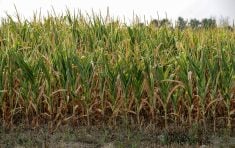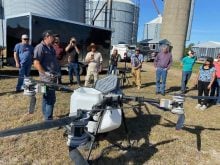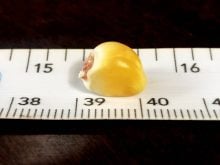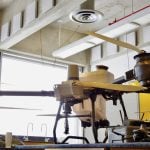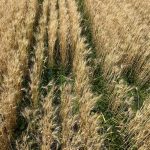Ontario corn is mostly clean of ear mould and mycotoxin levels are in line with long-term averages, says the annual survey of corn in the province.
The survey is conducted by OMAFRA field crop specialists with help from Grain Farmers of Ontario and members of the Ontario Agri-Business Association. Weather conditions in 2018 meant extensive mould problems with the Ontario crop, resulting in farmers taking discounted prices and having to store the problem corn until the corn market had enough demand that the infected corn found markets. Last year was a low mould year.
Read Also

The forced Japanese-Canadian farmers of the Second World War
Manitoba’s sugar beet farms drew on displaced Japanese-Canadians from B.C. during the Second World War
The 2020 survey found 89 per cent of samples tested were less than two parts per million of DON, which is acceptable for feeding to animals.
Mycotoxins, especially deoxynivalenol (DON) are especially a problem when fed to livestock. Hogs are most affected. DON is formed mostly by Gibberella or fusarium ear moulds.
From Sept. 23 to Oct. 2, OMAFRA reports that 245 corn ear samples were collected across the province. Five consecutive ears were collected from four random locations through a field and places into driers at 80C soon after picking.
The dry ears were shelled and gound coarsely in order to create a larger sample. Sub samples were finely ground for DON analysis at the University of Guelph Ridgetown Campus mytoxin lab.
Fifty-eight per cent of samples tested lower than 0.5 parts per million of DON, 31 per cent from 0.5 per cent to two per cent and 10 per cent from two to five parts per million. There was only one sample over five parts per million.
Those levels are similar to last year, but for sake of comparison to a high infection year, 2018, there were 33 per cent of samples below 0.5 per cent, but 27 per cent between 0.5 per cent to two per cent, 15 per cent between two and five parts per million and 25 per cent more than five parts per million.
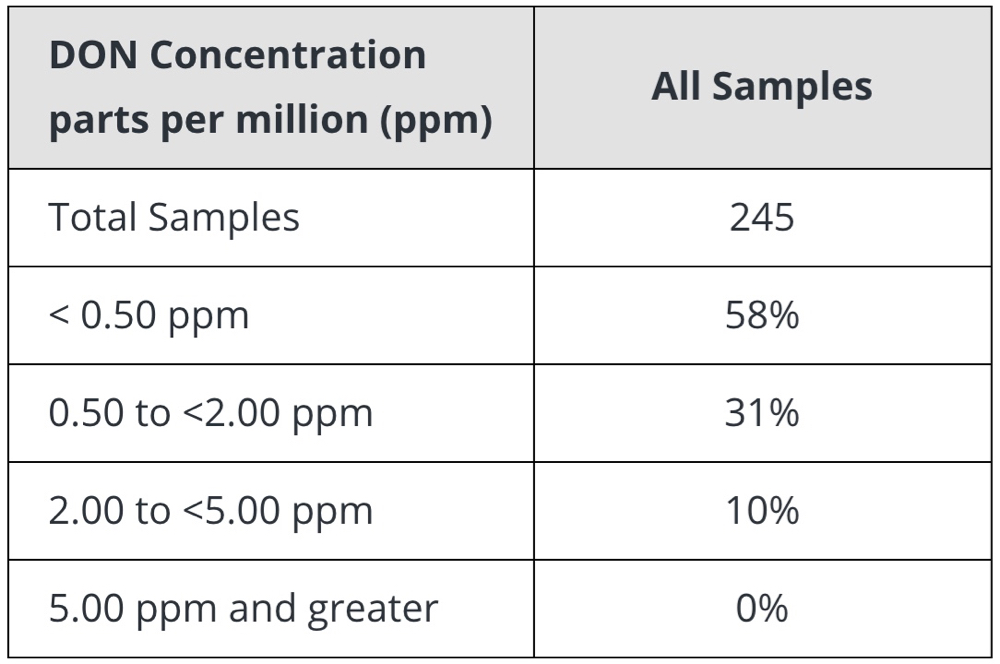
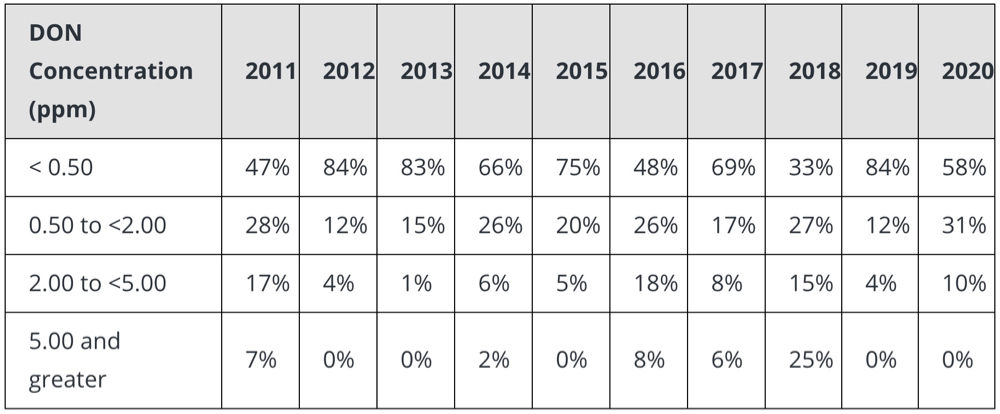
Insect feeding damage was lower than in many past years, OMAFRA reports, but feeding damage was associated with greater visual ear mould. Higher DON samples had greater insect feeding damage.
Other factors that result in higher DON concentrations include weather and hybrid susceptibility.
The year could have been more challenging with the significant rain in August across much of the province, while corn was in the silk stage. That likely resulted in some of the DON concentrations in 2020, but a dryer end of August and September limited the growth of those infections.





